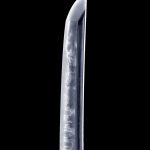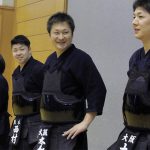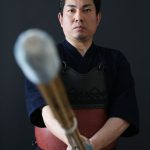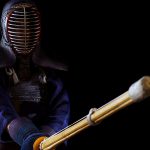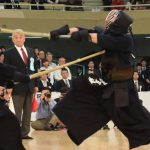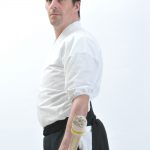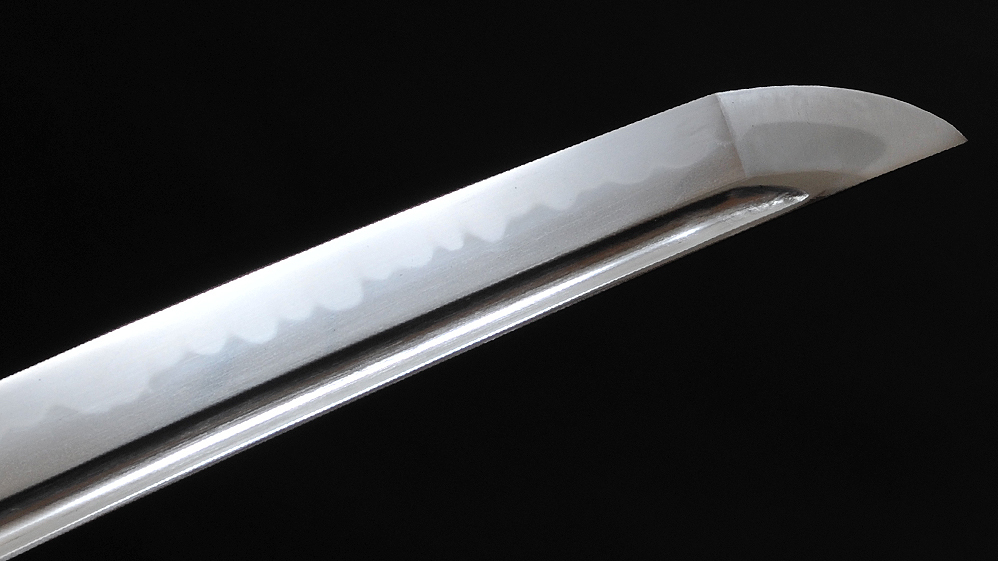
The Sword as a Tool for Mental Health
-Ron Campbell, www.soarfeat.org
You stand in front of your computer, in the center of your living room, sword at your side. You see each of your fellow iaidoka in their separate squares of the Zoom meeting. Some live in your own neighborhood, some live across the country, some live across the world. What you have in common is the Ryu, the school of swordsmanship. You listen for the sensei’s “Hajime!”
or the clap of hands that signal the start of the next waza. You take two relaxing breaths, you begin…
At the height of the pandemic this scene was repeated many times as Iaido practitioners sought to continue their practice even though in person classes were canceled or prohibited. Unable to meet at the dojo, martial artists across the globe met online to study and practice their art.
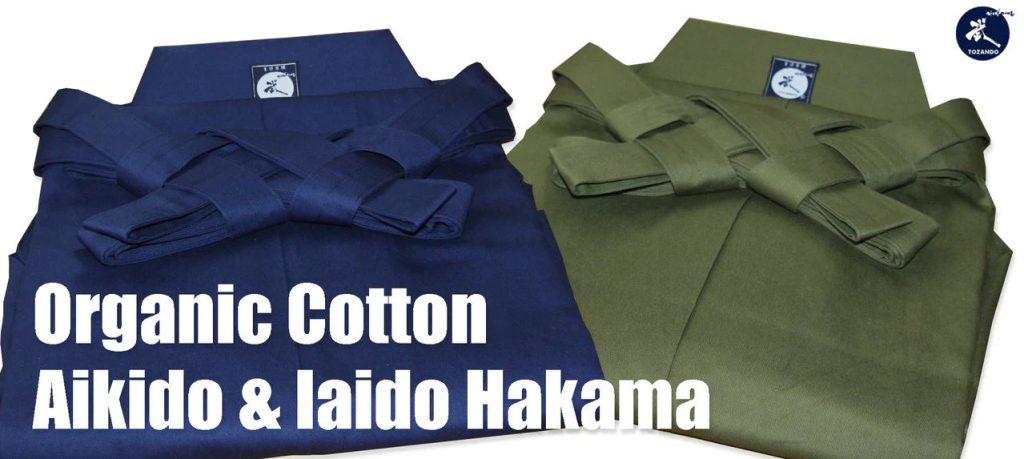
Sure, it was frustrating. Internet connections faltered. Video qualities varied. But through it all, martial artists did what they do; they persevered. Always on the lookout for the silver lining, they took the challenge as an opportunity to expand their community. To reach out beyond the limits of their zip code to find fellow Iai practitioners, each engaged in their own battles to find balance in a world turned upside down.
The pandemic took its toll on everyone, both physically and mentally and martial artists were certainly not immune to its effects. But in my experience, those of us who study Iaido had some valuable tools to combat the challenges to our mental health. The Pandemic put its burdens on every facet of all our lives. Iaido was for me, weightlifting for the mind.
Firstly, in studying Iaido, we seek to create a practice by which we may see ourselves with the kind of granular scrutiny. The sword is a kind of mirror and seeing and indeed facing our doubts and fears may be the first step in conquering them. And it may hold a key to better self-appraisal and discovery than any therapy session could do.
When practicing Iaido, or playing Iaido as it is termed, the practitioner seeks to move in the most efficient way possible. The founders of the art knew from years of practical experience on the battlefield that accuracy and precision always trumped unfocused emotion. The practitioner trains to develop true command over the mind and body to respond efficiently and clearly. What better training to help someone cope with a worldwide pandemic?
The term Iaido, like many Japanese concepts, does not translate into English at all easily – very roughly, I comes from Iru, to be; Ai (as in Aikido) means coming together or harmony and Dō means road, or Way (in the Buddhist sense). So, loosely translated, Iaido means being in harmony with one’s surroundings, always being prepared for any eventuality. Even a pandemic.
There have been many instances in which my Iaido training has unexpectedly offered me a footpath into a deeper understanding of myself and the world around me.
During one zoom practice at the height of the pandemic I found myself allowing my frustration with the internet connection and my frustration with the difficulty of a particular waza to fuse into something entirely detrimental to the work. I was allowing anger to seep into the proceedings.

That’s when I remembered something that had happened in the dojo before the pandemic at one of the “in person” practices we had all taken for granted.
I was working on a particularly difficult waza. Again and again, I was executing the final Kirioroshi- sometimes called the “courtesy cut” in which the practitioner puts the already mortally wounded (and imaginary) opponent out of their misery. Yes, the action looks, to the unschooled bystander, rather violent, but in Iaido it is not done with rage. The mindset is compassionate. We are taught that the practitioner is thinking “most regrettable” as the blade whistles in its perfect arc through the (imaginary) opponent. Frustrated with my technique, I was fixating on the move, practicing it again and again, like a dog on a bone. While still working with another student in the row next to me, my Sensei quietly said to me “Anger won’t do it. Try something else”
Back in the zoom meeting, I reminded myself that the Ai part of Iaido is about harmony, acceptance. My anger was not going to fix my computer, nor was it going to perfect my technique. But acceptance of the situation- seeing it as it truly was, simply a speed bump in a very long journey, might help me along my path.
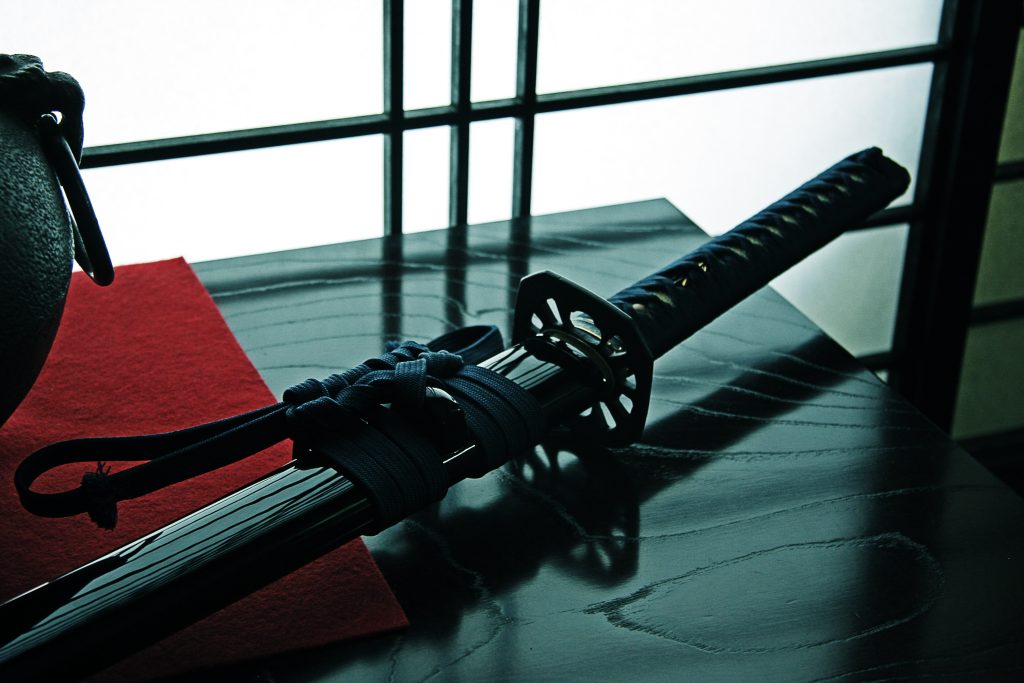
Time and again, I found Iaido helped me develop a practice by which I could respond and react to the ever changing landscape of the human condition. Sure, it’s not easy, but nothing good ever is.
As a dedicated “beginner” with only about 25 years of Iaido practice under my belt, I am still finding ways in which the art can enrich my life and protect my mental wellness. I try to be kind to others and strict to myself. Each time I step on the mat, whether it be at the dojo or in my living room in front of the computer, I’m offered a path to discover new levels of kinesthetic awareness, deeper understanding of my own instrument and stronger resilience to all the persistent challenges that face every person and every martial artist alike. And failure has become my friend. As Samuel Beckett said, “Fail. Fail again. Fail better.”
You stand in the dojo. You bow smartly to the mat, honoring the sacredness of your practice and all those who have gone before you on this path. The doubts, fears and perhaps anger is still there. But you accept them. You are compassionate, even to yourself. Awaiting the sensei’s command. “Hajime!” You take two relaxing breaths. You begin again.


